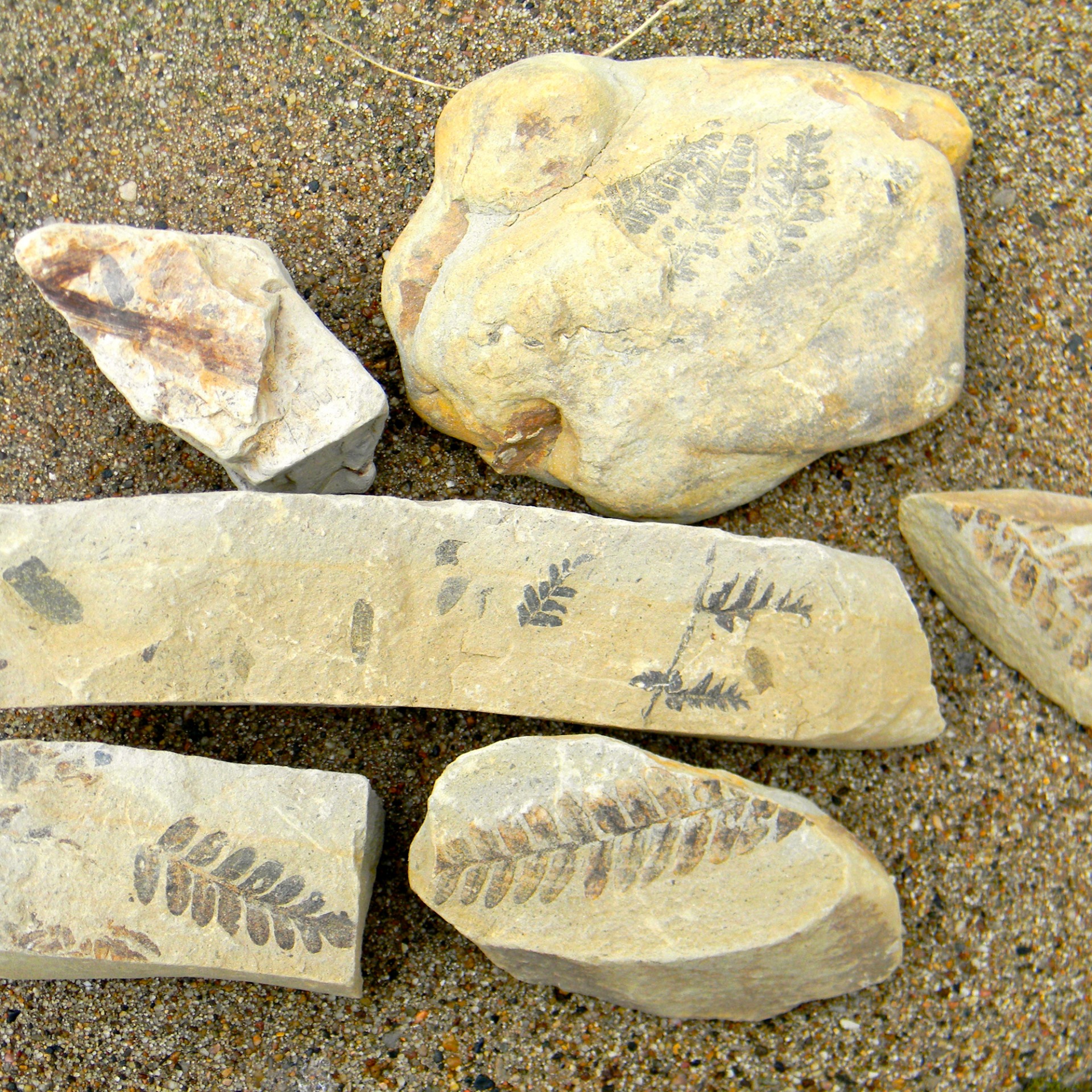
Rocks, Geology, and Coal Mining
Contributed by Cindy Blobaum, author of "Geology Rocks!" and Naturalist, Dallas County ConservationThe story of Iowa started long before people were around to witness and record what was going on. To uncover the story of how Iowa was formed and has changed, geologists look for clues in rocks, both present and missing. While most people don’t consider Iowa very rocky, farmers removing stones from their fields might argue otherwise!
Excluding field stones, much of the geologic history lies hidden under our fertile soil, making the best place to look for rock layers along our streams and rivers. From what geologists can see, or guess from what is missing, they believe that earthquakes, volcanoes, floods and ice have all had a role. Through long periods of time, the land has formed, eroded, and reformed through these slow but never-ending processes. And while there are many similarities in the geology across the state, each region has unique qualities that have played a part in where people have settled and how they have used the land.
**Cindy found this book in April 2016 and highly recommends it! Wisconsin, Illinois, and Iowa Rocks and Minerals by Dan and Bob Lynch.
Marion County
Currently Iowa is far from an ocean or vast lake, but it hasn’t always been that way. The rocks show that Iowa has been under water, either liquid or frozen, for much of its history. Ancient seas covered Iowa while it was located near the equator. While underwater, the land became covered with layers of sediments, including many aquatic animals that became fossilized. Pressure from upper layers and minerals in the water worked together to cement the sediments together, forming rocks including limestone, dolomite sandstone, and shale.
At the same time, the continental plate on which Iowa sits wandered around the globe, taking a trip that has lasted millions of years. At one time the plate split apart, creating a rift that filled with magma. Then it moved back together. Several other times, it crashed into other plates. These crashes caused parts of the land to get pushed up out of the water.
At one point in time, the land was higher in Wisconsin. A great river drained the land and soil into Iowa, covering much of the northeastern part with a silty delta. The climate was hot and humid. A large area that includes what is now Marion County was part of a warm swamp. Giant club mosses, horsetails, and coniferous trees created a jungle-like environment. As the plants died, they became covered by water and sediments. Instead of rotting away, as they were compressed, they became coal.
Through more plate movements, the land underwent several long cycles of rising and drying out, then sinking and being covered with water.
Even after the most recent land rise, the land became covered with water. Frozen water, in the form of mile-thick glaciers, crept across parts of Iowa at least four different times. The glaciers pushed a mix of loose gravel and soil, called till, across Iowa. This glacial till forms the base of Iowa’s rich farming soils.
When the climate warmed, the glaciers melted. Enormous amounts of water and ground up rocks rushed across the land, cutting new river valleys. After the water moved on, the sediments dried. Strong winds picked up the sediments and carried them across the land. Much of Iowa is covered by this windblown sediment, called loess.
Mining Iowa’s Treasures
Coal was mined in southeastern Iowa as early as the 1840s by early settlers. Most of it was burned to heat homes and businesses. When the railroads arrived, a lot of coal was needed for the steam powered locomotives. Everyone from families to companies across southern Iowa dug for coal and registered mines. Some coal seams were close to the surface, while others required digging shafts up to 245 feet deep. The coal layers that were worth mining could be anywhere from around 14 inches thick to over 42 inches (nearly 4 feet) thick. Within 20 years, rail tracks crossed the entire state and Iowa mined more coal than any other state west of the Mississippi River. Between 1860 and 1967, over 400 mines were registered in Marion County alone.
- Links to info about Coal Mining in Marion County
- New, updated and colored map with Marion County mine names, location, and start and end dates (as known) for each mine! (opens as PDF)
- WHO-TV story on coal mine reclamation in Marion County
While many of us do not remember active coal mining in southern Iowa, the Marion County Development Commission produced a wonderful video in 1997 documenting the coal mining history. Check the list of oral history participants at the end of the video. None of these folks are still with us today -- are any of them your relatives?
